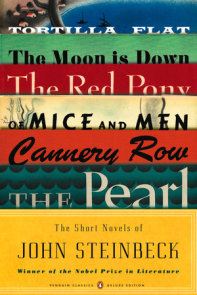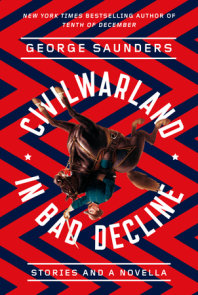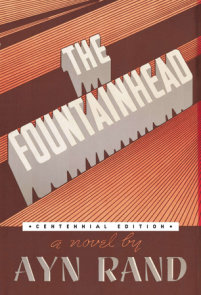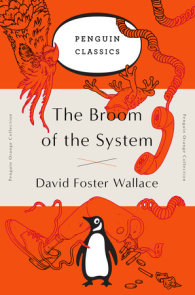TEACHING GUIDE
NOTE TO TEACHERS
Kurt Vonnegut’s death in April of 2007 will surely prompt scholars and classrooms to revisit his work. Cat’s Cradle (first published in 1963) is, perhaps, Vonnegut’s most accessible novel and, unlike some of his other publications, does not seem to draw the ire of censors and detractors (although it does contain very brief mature language). The novel, however, still clearly shows the craft for which Vonnegut is famous and provides the literary challenges that instructors desire.
Cat’s Cradle provides the irony and dark humor on which Vonnegut built his literary reputation but within a very straightforward literary construct — its plot is without the problems of time readers find in Slaughterhouse-Five. The text describes characters whose motivations are unique (a reporter, for instance, whose work leads him to a new religion and new job as dictator of an island nation) but whose presentation is easily comprehensible.
As with any Vonnegut novel, social commentary, while steeped in irony, remains explicit. This commentary will allow Cat’s Cradle to become part of a social studies curriculum that analyzes elements of Cold War America or weapons of mass destruction and their role in history or current events. Vonnegut’s book also lends itself to any class’s discussions of religion, politics, and societal values.
This text can provide challenging and appropriate study for high school students. The novel is an “easy read” that has enough critical acclaim to merit its inclusion in many classrooms. It gives students access to archetypal Vonnegut cynicism without being overly depressing.
ABOUT THIS BOOK
Cat’s Cradle gets its name from the children’s game. As Vonnegut says, “For maybe a hundred thousand years or more, grownups have been waving tangles of string in their children’s faces” to form “nothing but a bunch of X’s between somebody’s hands” (165-166). The emptiness of these X’s — “No damn cat, and no damn cradle” (166) — forms the cynical, ironic core of Vonnegut’s story. Cat’s Cradle traces the life of the narrator, John, as he discovers and interacts with his karass, Vonnegut’s term for the group of people who impact one’s life.
John, or Jonah as the narrator introduces himself, finds his karass as he seeks to write a book called “The Day the World Ended.” John tries to interview the “chief creators” (6) of the atomic bomb and discover their thoughts/actions on the day of the Hiroshima bombing (August 6, 1945). John’s discovery of Dr. Felix Hoenikker (one of the fictitious creators) and his interactions with Dr. Hoenikker’s family drive the plot of Cat’s Cradle.
John’s contacts with Hoenikker’s son Newt begin the narrator’s connections to Dr. Hoenikker’s legacy. Newt remembers the scientist making a cat’s cradle on the day of the bombing. John travels to the research laboratory of the General Forge and Foundry Company in Ilium, seeking to interview colleagues of the deceased scientist. He finds that Ilium remembers Dr. Hoenikker as both “one queer son of a bitch” (64) and a creative genius. John ultimately connects with Dr. Hoenikker’s family as he travels to the island of San Lorenzo where Franklin Hoenikker (the older brother) is “Minister of Science and Progress in the Republic of San Lorenzo” (80) and Dr. Hoenikker’s daughter, Angela, is visiting.
On San Lorenzo, the events of the book unfold as John encounters the rest of his karass but also realizes that each of the Hoenikker children has a crystal of Ice Nine, their father’s final discovery. Ice Nine freezes any water it touches and has the potential to turn Earth into an ice crystal. Vonnegut’s sense of irony takes over as John becomes the island’s new dictator just as Ice Nine is loosed on the world. Saved from initial destruction, John must live the final chapter of “The Day the World Ended.”
ABOUT THIS AUTHOR
Kurt Vonnegut (1922-2007) has received both praise and blistering criticism for his work. His most famous works — Cat’s Cradle, Slaughterhouse-Five, Breakfast of Champions — have gained wide a audience and are studied often. Vonnegut’s use semi-autobiographical material sometimes leaves readers wondering about both his life and his works.
TEACHING IDEAS
Cat’s Cradle primarily provides an instrument for teaching the analysis of literature, but its social commentary, historical parallels, and apocalyptic predictions allow for diverse uses in the classroom.
Instructors often use Vonnegut’s novels to explain satire and irony; Cat’s Cradle’s pages are brimming with ironies that typify Vonnegut’s satire. The ironies of the narrator’s journey (his chance encounters, his inadvertent discoveries) lead naturally to the themes and ideas that the text satirizes — man’s greed, government’s inanity, and religion’s false hope, for example.
Vonnegut’s characters are vibrant, and his unique presentation provides a wealth of material for classroom analysis. The novel’s first-person narration is straightforward; however, since the narrator is also a reporter seeking each new character’s insight into the other characters, the characterization comes not simply from the narrator’s point of view but from the joint psyche of John’s karass. Point of view, likewise, affords another interesting avenue into an analysis of the book because John draws his narrative from the points of view of others.
The novel’s social commentary warrants classroom study. The novel touches on issues of marriage, child rearing, social activism, war, interpersonal relationships, suicide, religion and many other social issues. By creating a fictitious religion — Bokononism — and making it one of the central elements of the novel, Vonnegut forces readers to examine the parallels of this faux religion with real ones. The questions this religion seeks to answer are the same with which mainstream religions struggle.
Though Vonnegut prefaces his book by saying, “Nothing in this book is true,” Cat’s Cradle contains Vonnegut’s typical usage of semi-autobiographical elements as well as many elements that while not “true” certainly parallel or reflect historical events. At its most basic, the text will augment a study of the people and events surrounding the dropping of the atomic bombs during World War II. The work also leads naturally to discussions of historical events such as nuclear proliferation, government secret-keeping, the revolutions of Haiti, etc.
Finally, in an era of very popular apocalyptic literature, Vonnegut’s text examines two days “the world ended” and allows classes to delve into the issues that promote nation building, national pride and jealousy, the rise and fall of world leaders, global environmental threats, and the connections of these events to faith and destiny.
DISCUSSION AND WRITING
“One – Four” — In this section of Cat’s Cradle, readers meet the narrator, John, and learn how he becomes involved with his karass (“teams that do God’s Will without ever discovering what they are doing” (2)).
1.By what two names does the narrator refer to himself?
2.What is the title of the book which the narrator intends to write? What is its intended subject matter?
3.What is a karass?
4.With whom does John begin his research for the book? Why?
“Five – Eight” — These chapters focus on John’s interactions through mail with Newton Hoenikker, the youngest son of one of the fathers of the atomic bomb. Newt conveys his memories of his family on the day the atomic bomb fell on Hiroshima.
5.What child’s toy does Newt remember Dr. Hoenikker making on the day the atomic bomb fell on Hiroshima?
6.Who are the other members of Dr. Hoenikker’s family? What are they doing on the day the bomb fell?
7.Who is Zinka?
“Nine – Eighteen” — These chapters cover the beginning of John’s visit to Ilium, the town in which the Hoenikkers lived, and General Forge and Foundry, where Dr. Hoenikker spent his working life. John meets and interviews several townspeople about the Hoenikkers.
8.Who is Dr. Asa Breed?
9.Who is Secret Agent X-9? What is the significance of this description?
10.Who is Emily? What is her connection to Dr. Hoenikker? Dr. Breed?
11.What type of work goes on at General Forge and Foundry?
“Nineteen — Twenty-four” — In this section John discovers the concept behind Ice Nine and reveals that each of Hoenikker’s children holds a crystal of the creation.
12.What is Ice Nine?
13.How did Ice Nine come to be created?
14.What is a Wampeter? Who is John’s Wampeter?
“Twenty-five — Thirty-six” — These chapters conclude John’s visit to Ilium. He sees Dr. Hoenikker’s lab and continues to meet people who give him insight into the Hoenikkers’ lives in Ilium.
15.What do each of the following characters reveal about the Hoenikkers?
Miss Faust
Lyman Enders Knowles
Marvin Breed
Jack (of Jack’s Hobby Shop)
16.What photographs does John find in Dr. Hoennikker’s office?
17.What does John discover about Dr. Hoennikker’s grave and marker?
18.What do readers learn about Emily Hoenikker in this section?
19.What name is on the pedestal of the angel grave marker? Why is it John’s vin-dit?
20.What did Franklin Hoenikker create in the basement of Jack’s Hobby Shop?
21.Why is Franklin Hoenikker wanted by law enforcement?
22.Who is Sherman Krebbs and what is his relationship to John?
“Thirty-seven — Forty-seven” — Chapters thirty-seven through forty-seven tell of John’s serendipitous discovery of the location of Major General Franklin Hoenikker and the narrator’s travel to the island of San Lorenzo where Hoenikker now resides. Assigned to write an article about the island republic, John sets off on the plane ride that occupies these chapters. He meets the new ambassador to San Lorenzo and his wife (the Mintons) and an American businessman and his wife (H. Lowe Crosby and Hazel). In these chapters readers learn the history of San Lorenzo.
23.Identify these characters:
Mona Aamons Monzano
Miguel “Papa” Monzano
Julian Castle
Philip Castle
Horlick and Claire Minton
H. Lowe and Hazel Crosby
24.How does John encounter Franklin Hoenikker?
25.Describe San Lorenzo as the Sunday Times describes it.
26.How did Franklin Hoenikker become associated with San Lorenzo?
27.What about San Lorenzo appeals to H. Lowe Crosby?
28.Explain the Mintons’ past troubles and how they led to his ambassador’s post in San Lorenzo.
29.Who wrote a history of San Lorenzo?
30.Explain “dynamic tension.”
“Forty-eight – Sixty” — These chapters complete John’s plane ride to San Lorenzo. Readers learn more of the history of the island and of its religion Bokononism and Bokononism’s founder Lionel Boyd Johnson and the man with whom he attempted to create an island utopia of San Lorenzo, Earl McCabe. John also realizes that Newt and Angela Hoenniker have joined the journey at a stop in San Juan.
31.Identify the following characters:
Lionel Boyd Johnson
Angela Hoenikker Conners
Harrison Conners
Nestor Aamons
Corporal Earl McCabe
32.Trace the events that led Johnson and McCabe to San Lorenzo.
33.What does John learn from Angela about Dr. Hoenniker? About her life before and after Dr. Hoenniker’s death?
34.What major event does John say that Angela leaves out of her story?
35.Describe the realities of San Lorenzo.
36.Trace San Lorenzo’s history.
37.What was McCabe and Johnson’s goal on San Lorenzo? What two areas do they choose to address in order to achieve this goal?
“Sixty-one — Sixty-eight” — In these chapters John and his karass arrive on San Lorenzo where they meet Papa Monzana, Franklin Hoenniker, and Mona Aamons Monzana. While issuing the island’s official reception, Papa collapses and revives only enough to name Franklin Hoenniker as the island’s new leader. Readers also find out that Bokononism is illegal and learn the story of the island’s Hundred Martyrs to Democracy.
38.What do the signs at the airport forbid?
39.What is unique about the crowd, band, dogs, and even infants of the San Lorenzans who greet John?
40.What is Papa’s background?
41.Who is to be the next president of San Lorenzo?
42.What does Mona do to the pilot?
43.Who are the Hundred Martyrs to Democracy?
“Sixty-nine — Eighty-six” — In these chapters John checks into San Lorenzo’s one hotel where he is contacted by Franklin Hoenikker and asked to move to Frank’s house on the island. While waiting for Frank to come discuss “the most important thing ever” (161), John learns more about San Lorenzo, Bokononists, and the Hoenikkers.
44.What ritual of Bokononism does John discover?
45.What is that art that Newt has made?
46.Why did McCabe and Bokonon make Bokononism illegal?
47.Who is Dr. Schlichter von Koenigswald?
48.What does each Hoenikker child grab when the power returns?
“Eighty-seven — One Hundred four” — As the book moves to its end, Frank offers to make John President of San Lorenzo and to allow him to marry Mona. John accepts and prepares for the announcement on the Day of the Hundred Martyrs. Papa prepares for death.
49.What is the one “catch” to being the next President of San Lorenzo?
50.What is Papa’s religion?
“One Hundred five — One Hundred twenty-seven” — John discovers that Papa possessed and has taken Ice Nine to end his suffering. In the celebration of the Day of the Hundred Martyrs a plane crash causes Papa to fall into the sea, touching off the destruction of Earth by Ice Nine. John and Mona survive in a bunker while others of John’s karass also survive. John must decide what to do with his last moments of existence.
51.How does Papa die?
52.How had the Hoenikker children discovered Ice Nine?
53.How is Ice Nine released on the world?
54.Who survives? How?
55.What does Bokonon say about the end?
SUGGESTED ACTIVITIES
1.Have students write an additional chapter for the book. What will happen to the characters who have survived?
2.Examine Cat’s Cradle as a work of satire. What things does Vonnegut satirize? What changes does Vonnegut wish to see?
3.Examine the different religions represented in your community. Take field trips or bring in speakers to tell of these religions. Have students research different religions. How are they different/similar? What underlying assumptions do these religions share?
4.Examine different types of government. What must governments provide? How do different methods of government balance these provisions? Research kinds of government that have succeeded and failed. What were their strengths/weaknesses?
5.Research nuclear proliferation and weapons of mass destruction. Conduct a debate between pro and anti-nuclear factions.
6.Point of view is unique in Cat’s Cradle. While the narration is first person, the narrator’s views are shaped by his reporter’s tasks and sensibilities. Examine John’s views of the other characters. How are they formed? How do they shift as the text progresses?
7.Consider any of the text’s major characters by examining how and when information about the character is revealed. How are readers expectations controlled by the way Vonnegut presents the character you’ve chosen?
8.Create a plot map of Cat’s Cradle. Separate the plot events for each central character. Where do these maps intersect?
9.Create a dictionary of Bokononist terms.
10.Research a famous inventor. What is unique about him/her? What in the inventor’s background motivated the work? If you were asked to invent something, what problem might you solve? What are the obstacles to creation?
BEYOND THE BOOK
1. What actually happened on August 6, 1945? Research the actual men who created the first atomic bomb. What happened to them and to others on that day?
2.Examine satire as a literary form. Students may read other satirists (Swift’s A Modest Proposal to Orwell’s Animal Farm). Students may also examine satire in other media — Garry Trudeau’s Doonesbury, The Simpsons, The Colbert Report.
3.View the movie The Last King of Scotland (rated R). Compare the movie to the events of San Lorenzo. Watch the SciFi Channel’s Eureka. What are its parallels to Ilium?
4.Combine classes with a chemistry teacher to examine the magic of chemical interaction. How can chemical arrangement be changed?
5.Read other Vonnegut novels. Look for repeated elements of plot, character, theme, etc. Examine the real-life events that make it into Vonnegut’s fiction.
OTHER TITLES OF INTEREST
Slaughterhouse-Five and other novels by Kurt Vonnegut
A Modest Proposal Jonathan Swift
Gulliver’s Travels Jonathan Swift
Huckleberry Finn Mark Twain
On the Beach Nevil Shute
The Stand Stephen King
The Left Behind Series Jerry Jenkins and Tim LaHaye
Papa Doc, Baby Doc: Haiti and the Duvaliers by James Ferguson
The Manhattan Project: The Birth of the Atomic Bonb by Its Creators, Eyewitnesses, and Historians Cynthia Kelly and Richard Rhodes
http://www.atomicmuseum.com/tour/manhattanproject.cfm — a guide to the atomic bomb’s creation
http://www.gwu.edu/~nsarchiv/index.html George Washington University’s guide to the National Archives includes a section on weapons of mass destruction and Iraq
ABOUT THIS GUIDE
David Corley teaches high school English in South Carolina. His experience is with many different levels of students in grades 9-12. He has also taught courses for adult education, college, and graduate-level students.
×
Become a Member
Just for joining you’ll get personalized recommendations on your dashboard daily and features only for members.
Find Out More Join Now Sign In





















